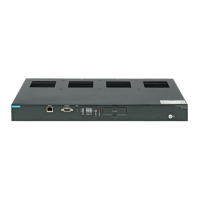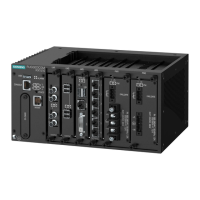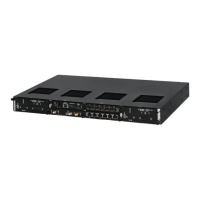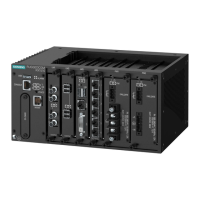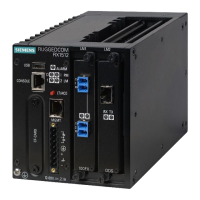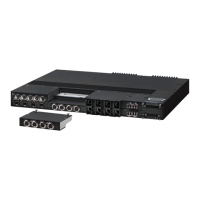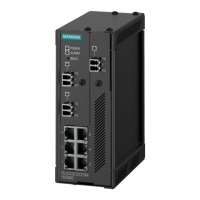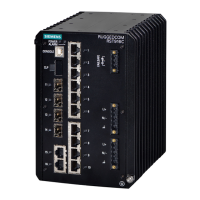Chapter 5
Setup and Configuration
RUGGEDCOM ROX II
User Guide
708 Configuring STP Globally
Parameter Description
Default: rstp
The version (either only STP or Rapid STP or Multiple STP) of the Spanning Tree
Protocol (STP) to support.
Hello Time (sec) Default: 2
The time between configuration messages issued by the root bridge. Shorter hello times
result in faster detection of topology changes at the expense of moderate increases in
STP traffic. (Relationship : maxAgeTime >= 2 * (helloTime + 1.0 seconds))
Max Age (sec) Default: 20
The time for which a configuration message remains valid after being issued by the
root bridge. Configure this parameter with care when many tiers of bridges exist, or
slow speed links (such as those used in WANs) are part of the network. (Relationship :
maxAgeTime >= 2 * (helloTime + 1.0 seconds))
Transmission Hold Count Default: 0
The maximum number of configuration messages on each port that may be sent in
a special event, such as recovering from a failure or bringing up a new link. After the
maximum number of messages is reached, Rapid Spanning Tree Protocol (RSTP) will
be limited to one message per second. Larger values allow the network to recover from
failed links more quickly. If RSTP is being used in a ring architecture, the transmit count
should be larger than the number of switches in the ring. If a number is not defined, the
value is considered unlimited.
Forwarding Delay (sec) Default: 15
The amount of time a bridge spends learning MAC addresses on a rising port before
beginning to forward traffic. Lower values allow the port to reach the forwarding state
more quickly, but at the expense of flooding unlearned addresses to all ports.
Maximum Hops Default: 20
The maximum possible bridge diameter inside a Multiple Spanning Tree (MST)
region. MST BPDUs propagating inside an MST region carry a time-to-live parameter
decremented by every switch that propagates the BPDU. If the maximum number of
hops inside the region exceeds the configured maximum, the BPDUs may be discarded
due to their time-to-live information. This parameter is only applicable to Multiple
Spanning Tree Protocol (MSTP) configurations.
MST Region Name The name of the MST region. All devices in the same MST region must have the same
region name configured
MST Revision Level Default: 0
The revision level for the MST configuration. Typically, all devices in the same MST
region are configured with the same revision level. However, different revision levels can
be used to create sub-regions under the same region name.
4. On the eRSTP form, configure the following parameters as required:
Parameter Description
Max Network Diameter Multiplier Synopsis: 1, 4
Default: 4
The Max Network Diameter as a multiplier of the MaxAgeTime value.
BPDU Guard Mode Synopsis: specify, noshutdown, untilreset
Default: noshutdown
The Rapid Spanning Tree Protocol (RSTP) standard does not address network security.
RSTP must process every received Bridge Protocol Data Unit (BPDU) and take an
appropriate action. This opens a way for an attacker to influence RSTP topology by
injecting RSTP BPDUs into the network. BPDU Guard is a feature that protects the
network from BPDUs received by a port where RSTP-capable devices are not expected
to be attached. If a BPDU is received by a port for which the 'Edge' parameter is set to
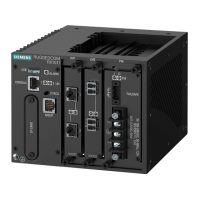
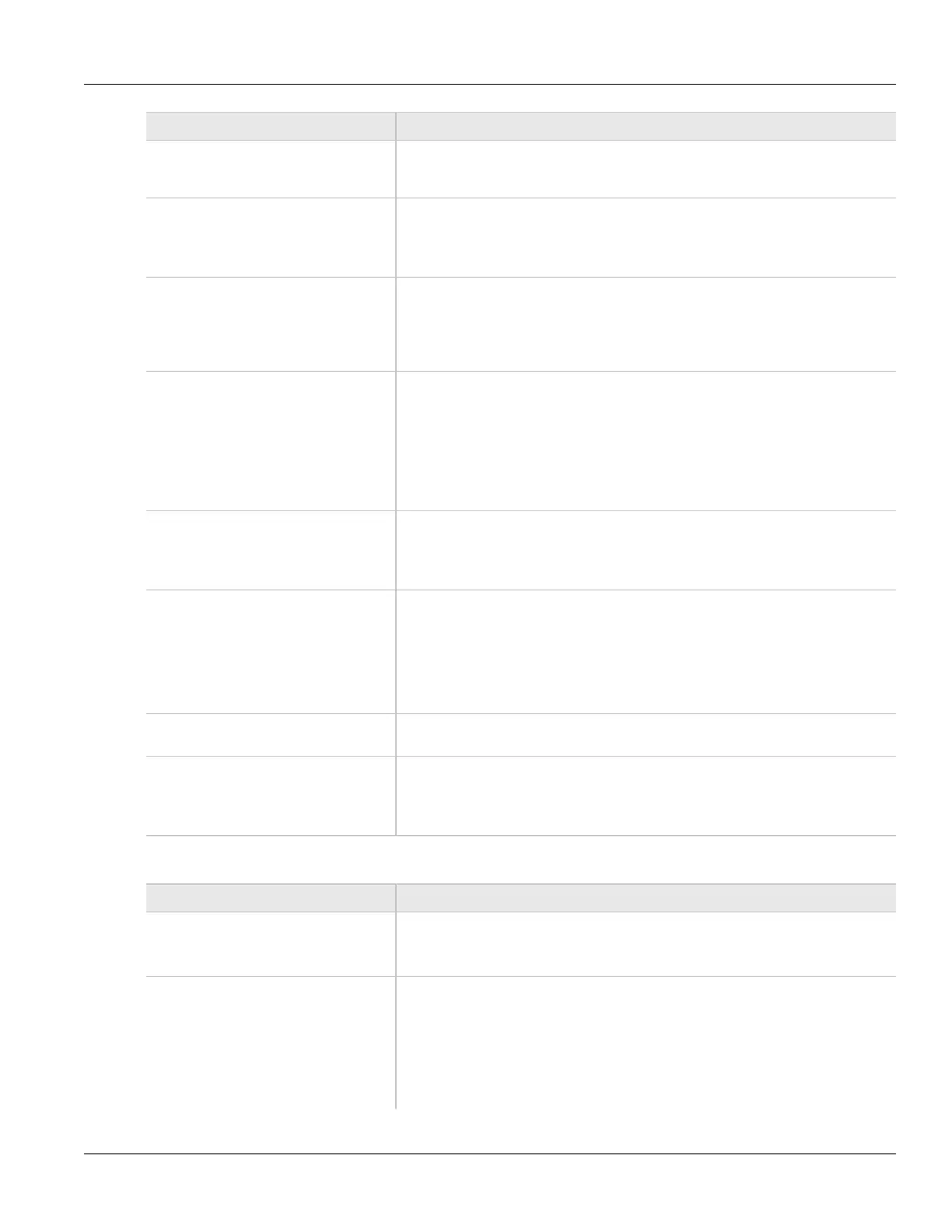